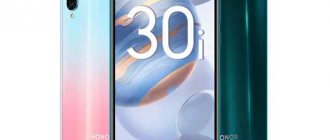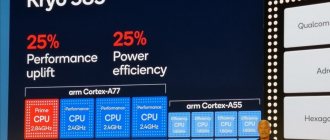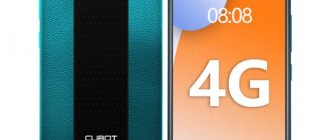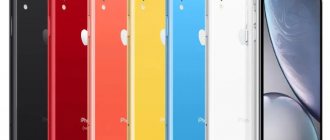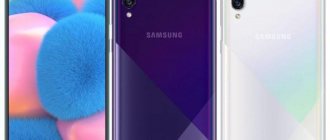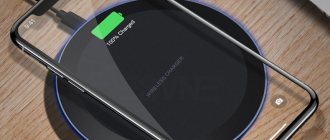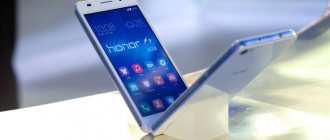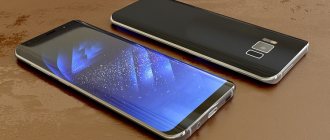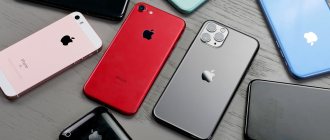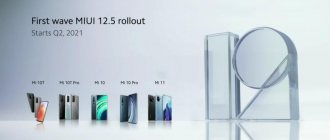For at least 6 years now, I have been actively reading books almost every day. For me, as an author, this is necessary to find new ideas for materials, improve my knowledge, and, ultimately, develop literacy.
During this time, I constantly alternated reading paper books with reading from gadgets, because in different situations one was more convenient than the other. As a result, I constantly had to look for some kind of compromise, and this greatly interfered with immersion in the text.
At the beginning of April, I bought myself an e-reader , and I am no longer looking for compromises, because it turned out to be my ideal reading device. Based on personal experience, in this material I will tell you why, in the world of smartphones and tablets, e-readers still remain ideal gadgets for “bookworms.”
Paper books are cool, but inconvenient
I highly recommend Jürgen Wolf’s “School of Literary Excellence” to anyone who wants to learn how to write articles, books, or scripts.
It tells you basic but very important things that will explain how a story works, how to come up with ideas, how to find a publishing house to write to, and how to avoid writer's block. Surely there will be people who will object, saying that nothing can replace paper publications. I partly agree with them, but I think that in the future books will continue to exist purely as image items. Personally, despite the fact that I read digitally, I still buy the books I particularly like in paper and put them on the shelf. True, this was not always the case.
After several years of reading paper books, I identified a few persistent problems that irritated me. Firstly, different books may have different fonts, different writing sizes, different layouts, and in some cases this leads to the fact that it becomes simply impossible to read, despite the cool content. Plus, once you get used to one style, it’s difficult to adapt to another.
Secondly, books are different. I divide them into “pocket” and “home” ones. You can put the first ones in your belt bag and read them anywhere. Secondly, these are, as a rule, some kind of expanded editions for fans of what this book is about.
Based on my experience, I can say that “pocket books” most often have problems where the pages are bound, and constantly straining to bend or hold one of the sides irritates me. There are fewer complaints about “home” books, because you read them at home, sitting comfortably, and they also have fewer problems with binding. However, it is difficult to take them somewhere on the road or to bed before bed, because they are heavy and large.
So I came to the conclusion that I started reading from my gadgets, but here, too, everything turned out to be not so rosy.
Do not read from AMOLED screens, otherwise you will ruin your eyesight
As you can see, the IPS screens on the iPhone 8 and iPhone 11 have no flicker.
In 2022, I bought myself a Samsung Galaxy S8 . It was one of my first flagship smartphones, which also had an unusual design. The AMOLED display, curved on the left and right sides, was mesmerizing, although for now I was just using this phone on an everyday basis.
When trying to read books from it, I encountered headaches and cutting sensations in my eyes.
Literally 10-15 minutes passed, and I felt quite strong discomfort. This is due to the fact that the display had PWM, and since I was reading in rooms where I had to reduce the brightness, the flickering became more noticeable to the eye. Topic : Which display is better: OLED or IPS.
Examples and tests Ultimately, this led to fatigue, and reading from a smartphone turned out to be a so-so idea. Still, I continued to do this periodically, but stopped in time on the advice of the ophthalmologist. The fact is that the brain picks up these flickers and cannot decide what command to send to the eye muscles: to narrow the pupil or, on the contrary, to dilate, because it cannot keep up with the microflares, and the eyes are in a tense state.
Dual-screen smartphone Hisense A2
Each of the AMOLED and E-ink technologies has its own advantages. AMOLED has bright colors and fast performance. E-ink has low power consumption, good visibility in bright sunlight and less strain on eyesight. Hisense was able to combine all these advantages together by placing two screens at once in the Hisense A2 smartphone.
On the front side of the smartphone there is a color AMOLED screen with a resolution of 1920 × 1080 pixels, and on the back there is an E-ink screen with a resolution of 960 × 540 pixels.
In standby mode, when the main screen is off, the screensaver, clock, weather and menu are displayed on a black and white E-ink screen. This way the phone always displays the necessary information. It is convenient to use such a device both in a dimly lit room and in bright sunlight. It is enough just to turn it towards you in the desired direction.
iPhone and iPad are good options, but...
iPhone 11 is one of the best smartphones I've ever owned.
In 2019, at the very start of sales, I bought myself an iPhone 11 . It already had an IPS screen, and after AMOLED with PWM, this was a huge plus. It turned out to be much more comfortable to read from it; my eyes hardly got tired. It is ideal for reading in bed or in a taxi, if not for a couple of “buts” again.
Its screen was large, but not large enough to accommodate all the text. I had to periodically increase and decrease the text size. I didn't find a middle ground. In addition, the smartphone weighs a fair amount, and holding it in your hand all the time becomes uncomfortable over time - you just get tired.
The iPhone screen is one of the best. Reading and watching movies on it is still a pleasure compared to other smartphones.
Such moments, alas, as I said above, distract from the reading process. But you can read on the iPhone in the bathroom, because it is protected from water. In my opinion, lying in the bathroom with a paper book is blasphemous. The paper and binding are unlikely to withstand moisture.
iPad a little earlier, in 2022, and it’s comparable to large books. The tablet is ideal for reading indoors. Otherwise, this is a large and heavy gadget that you cannot take with you anywhere. The exception to the rule is the iPad mini . It, like an e-book, easily fits into a fanny pack. True, for some reason the iPad screen tired my eyes even more than the iPhone.
I also gave up on reading from the tablet and returned to regular books until I decided on one of my best purchases.
E-reader: the best device I've bought recently
The reader is approximately the size of an iPhone 11. In the photo it is next to the SE 2020
For a very long time I was skeptical about e-books. Despite the negative experience with reading from mobile devices, it seemed to me that these devices were even more useless for such tasks, until I saw my friend’s e-reader.
In real life, the e-reader turned out to be much more convenient than smartphones, tablets and regular books combined. A few months later I bought myself the same one.
It cost me 9 thousand rubles. If you want something cheaper, I advise you to pay attention to Amazon Kindle readers. They are not officially sold in Russia, but on the secondary market they cost 5-6 thousand.
The iPad mini is also good for reading. I hope one day Apple tablets will be waterproof so they can be taken into the bathroom.
The device is very small. In the photo above you can see how the book looks next to the iPad mini and iPhone SE 2022. You can easily throw it into a banana or jacket pocket. If you wear big trousers, then the e-reader will also fit into their pockets.
The display diagonal is only 6 inches, plus the aspect ratio is 4:3 , which makes the screen comparable to book sheets. The screen size is smaller than most modern smartphones, but I wouldn’t compare them, because in terms of resolution (it’s 1024x768 pixels ), the ereader will be inferior to even the most inexpensive Xiaomi.
But this is only in dry numbers, because thanks to the e-ink card (this is the coolest thing in the industry), the image is amazing: there are no ladders, pixelation and other shortcomings that I might have in nightmares.
This is how pixels work using electronic ink technology.
The fact is that the matrix of e-books is radically different from those found in smartphones. Each pixel in e-readers is represented by a small capsule of black or white charged particles.
By applying voltage, they can be controlled, so that at the right moment the desired particle comes to the surface, while the other hides. As a result, an image is formed.
The pixels in such screens do not emit light, which means they do not waste energy. Readers only drain battery power when the screen is refreshed, usually when turning pages.
PocketBook CoverReader
CoverReader is a thin and light cover book for the Samsung Galaxy S4 smartphone with a 4.3-inch diagonal E-ink touch display and a resolution of 800 x 480 pixels. CoverReader is powered by the standard smartphone battery.
You can turn pages either using buttons or using the touch display. In addition to reading books, you can view documents, email messages or texts from the Internet.
This is the lightest device I've ever held in my hands.
I am amazed at the progress; one such gadget that fits in a pocket can accommodate several national libraries.
The reader weighs only 155 grams. No joke, you can’t feel it in your hand, but literally float in the air. This is because the body is made of soft-touch plastic, and the battery has a capacity of 1300 mAh. This is more than enough for an e-book.
The result is an ideal combination of a compact and lightweight body that is convenient to hold in any position: lying on a bed, sitting in a chair, standing in a vehicle, riding in a taxi, anywhere.
I started taking the e-reader with me absolutely always, it became an indispensable thing, just like a smartphone. This led to very good consequences.
I now spend my free time on books rather than on social networks
I confess, I was a hostage to Instagram and VKontakte: I sat there literally every free minute, especially while standing in lines or while I was going somewhere. Now I started spending this time on books. As soon as I have a free minute, I immediately grab the reader and read.
Plus, it's not just a convenient device - it's a fun device! The reader not only fits well in your hand, but you also want to hold it. It is very important! Because a person should have a pleasant experience working or consuming content from the device he is using.
a MacBook as an example , because I get a kick out of working on it. You sit down at the table, open the lid and immediately feel the pleasant aluminum.
There are no unnecessary details in its design that could distract from work; on the contrary, the device creates a pleasant tactile impression, and you don’t want to let it go. Therefore, I am happy to start the day by writing new materials on this laptop, just like with the e-reader.
6-inch e-ink screen is something
Only if you look very closely can you notice the pixels.
In normal use the image is smooth. The most important thing is that it doesn’t hurt your eyes. Electronic ink is no different from regular ink. The text on the screen looks amazing, the high resolution, by the standards of readers, gives a smooth and clear picture.
My device uses the latest generation of e-ink Carta , it has high contrast (the letters are easy to read in any light), and the surface has a matte texture. Due to this, direct light is scattered and leaves no glare. So your eyes don't get tired at all.
In case you find yourself somewhere in the dark, the manufacturer has provided LED backlighting. It is adjustable, perfect for reading before bed or on the train. The brightness does not hurt the eyes and it feels as if the screen is illuminated by a lamp with soft light.
You can also change the font size of the book and choose the most convenient one.
The screen itself is slightly recessed under the frames, and this is also a plus for ergonomics. Firstly, fingers rarely touch the screen, and there are practically no fingerprints on it. Secondly, due to the presence of frames, the book is comfortable to hold in your hand; your thumb fits perfectly on them and does not cover the “working area”. The screen, by the way, is not touch-sensitive; control is carried out using the navigation buttons at the bottom.
The right button is responsible for scrolling forward, the left button is responsible for scrolling back. There is also a joystick for navigating the interface. I usually hold the reader in my right hand, to be honest, returning to previous pages is inconvenient; I can’t reach the left side with my finger. The joystick for navigation is also inconvenient. I have large fingers, and I constantly hit the center key, which serves as a confirmation function.
It may be suitable for girls with neat fingers, but definitely not for brutal guys with “hard-working” hands. But here I’ll note that you only have to use the central navigation keys when it’s time to choose a new book in the library. They are not used when reading.
In the dark, dark screen: how electronic ink is returning to the devices of the future
Old stuff from the 20th century
Xerox had the concept of e-paper back in the 70s. E Ink Holdings, a company whose origins go back to the famous Massachusetts Institute of Technology, developed an idea for commercial use. E Ink, like copier, has become a household name; today this term is used as a synonym for electronic paper. E Ink Holdings is still the world leader in this area.
Electronic paper is unique in that the image on it is formed by the physical movement of pigment particles. The basis of the technology is microcapsules as thick as a human hair. Each of them contains positively charged white and negatively charged black particles. Positively charged ones are attracted to negatively charged electrodes, and negatively charged ones are attracted to those contacts that have a positive charge. This allows you to set the color of each capsule, which provides a “black and white” image on the screen. After the voltage is removed, the particles remain in their places - the image does not change, and the battery life is spent only on updating it.
The economical way to display information and the paper-like image were immediately used in electronic readers. The first E Ink-based device, the Sony Librie EBR 1000, appeared in 2004. And already in 2007, the history of Kindle devices from Amazon began, which are still loved by many fans of e-readers. Later, devices with moisture protection, touch controls, additional colors, and wide Internet connectivity appeared. But the golden age of devices did not last long.
The e-reader market has already passed the stage of rapid growth. No breakthroughs are expected now. Device sales are related to the number of people who like to read, and only mass popularization of reading can influence them
Evgeniy Suvorov, head of the “Electronic books” department
But this is only part of the history of electronic paper, which will be rewritten in the coming years.
Not only e-readers
It may seem that the technology behind e-readers has long occupied a niche and is losing popularity, but forecasts say otherwise. The “electronic paper” segment is not only holding its own, but is also gaining momentum: according to estimates, the market will double by the middle of the decade.
The E Ink company is focused on expansion: back in 2022, management noted that their goal is to reduce dependence on the e-reader market and focus on IoT products (the level of development of devices that can be networked via the Internet or using wireless technologies). The most eloquent example is electronic price tags, an energy-efficient technology that minimizes retail costs.
Supermarket visitors are familiar with the situation when the price at the checkout differs from what was on the counter. This happens due to the workload of employees; they do not have time to change hundreds of price tags, synchronizing them with the database. An electronic price tag solves this problem: information is updated automatically for the entire store from a computer. This development looks like such a promising undertaking that large domestic companies are ready to join the project. Other developments that use electronic ink include thermostats and smart badges.
E Ink isn't dead just because we love to read on screens, but the technology has some strong points to play. The main ones are low power consumption and high contrast. The weak point is still the speed of updating information, so you can watch video on such devices. If we talk about prospects, then, in addition to books, E Ink will be convenient as a technology for simple information screens where saving energy consumption is needed. Such solutions can be applied in dozens of areas: from healthcare to information signs
Andrey Solovyov, IT journalist and video blogger
The focus on IoT is only one facet of e-paper: a technology that has proven itself in consumer electronics will not leave this market.
New personal assistants and fashionable monitors
Electronic paper allows you to watch movies or even play, but so far this is not a mass technology, but the research of enthusiasts. But at the same time, the number of highly specialized devices, the use of which does not require high screen refresh rates and reliable color reproduction, is growing. These are notebooks like Remarkable 2, smart watches, alarm clocks and even typewriters.
Unlike IoT, sustainability is a new trend in personal devices, where everything is limited to the absence of “plugs” for charging phones or devices that do not harm the environment - like Fairphone. But the abundance of unnecessary information and attempts to combat it is a fashionable trend where electronic ink can show itself in all its glory. It is no coincidence that color is the first thing that manufacturers of solutions that help to concentrate are trying to get rid of - for example, the Ratio launcher for Android.
But phones with E-ink, albeit in color, still exist - Hisense A5C or Mudita Pure. Provided that all unnecessary things like the camera are removed from such devices, humanity may be on the verge of the emergence of a new trend. By the way, it’s the same with monitors: E ink, a solution from DASUNG, although it costs more than $2,000, can save people who work with text from flickering screens.
E-paper was never a breakthrough. But the future of this technology is much more promising than simply serving an audience accustomed to e-readers. In the near future, Internet of Things devices or non-standard personal devices will appear - perhaps in the future, ink screens will even become an alternative to any “retina”.
Read more
NASA has published images from Mars. Users compared one place to a cemetery
Life on Mercury, closer to the Sun: a very bad or brilliant idea
It is impossible to imagine which objects in the Universe are the largest and where they are located
Buying e-books is convenient and necessary
I was also surprised that inside there is already a whole library with almost all the classic works of Russian writers.
Despite the fact that the reader allows you to download any content, I prefer legal resources where I purchase digital versions of books. They are either cheaper or comparable to paper ones. The average price tag for an e-book is 200 rubles. Sometimes you can snag something at discounts, and sometimes there are more expensive editions.
After payment is made, the book can be downloaded in several formats that suit you. The most optimal for e-books: ePub and fb2 . I would not consider PDF and others; they have a fixed layout that does not adapt to the device from which the user is reading.
The reader has 8 GB of built-in memory; books are loaded into memory via a connection to a computer, like on a regular flash drive, or you can insert a microSD memory card. The only negative about this device is the microUSB connector. Do you know how many of these cables I have at home? One, and it came with this e-book. Although this reader was released in 2022, so it’s permissible.
Why buy this type of mobile phone?
Not many, but there are still relatively recent phone models with e-ink displays. This is the case of manufacturers such as Hisense , which late last year launched an interesting terminal with these characteristics. A mobile phone with an e-ink screen is primarily intended for those people who are looking for a terminal for reading e-books. If this is your case and you read these types of books most often during the week, this could be a great choice.
And it is on this screen that we can enjoy an exceptional display of books. In addition, these more modern models are backlit so that we can read them at night. Another big advantage of these phones is their impressive battery life, so much so that we can count on the terminal operating for several days without recharging. Hence, without a doubt, book display and battery life are the main reasons why you might want to have a phone with these specifications.
